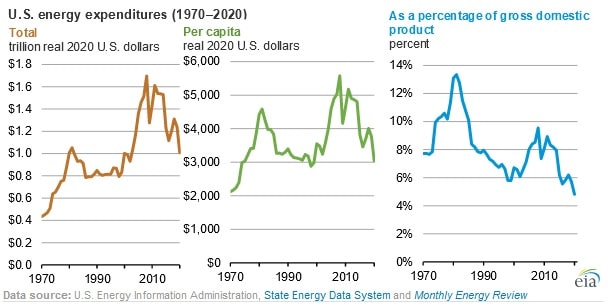Most U.S. Households Projected to Spend Less on Energy This Winter: EIA

U.S. households that utilize natural gas and those situated in the West, which together represent over half of all U.S. households, are expected to spend less on energy this winter in comparison to last winter, according to an Oct. 12 report by the U.S. Energy Information Administration. The agency expects residential energy prices for heating fuels to be lower than they were last winter.
Despite the lower commodity price, U.S. households that utilize heating oil could pay marginally higher bills this winter, compared to last year because of elevated heating demand due to a cooler winter in the Northeast, where the majority of the fuel is used.Household energy costs are determined both by consumption and commodity prices on the wholesale and retail market. Wholesale energy prices are influenced by the supply and demand fundamentals evident in the market and can be influenced further by a number of factors which include geopolitical factors and weather. The weather is also a key driver of energy consumption in households. A milder winter implies lower energy consumption by households. The agency expects a warmer-than-average winter in 2023, with some extent of variation by region. This is based on data from the National Oceanic and Atmospheric Administration and the previous 30-year trend.
Due to the unpredictability of weather, the agency in their Winter Fuels Outlook report includes energy expenditure scenarios based on both a warm and cold winter. As an assumption, the agency forecast residential energy prices for all heating fuels to be lower than they were last winter.
The agency forecast natural gas prices to be 14 percent lower this winter compared to last year, in line with high natural gas inventories and easing supply concerns across global markets. Lower wholesale natural gas prices are expected to reduce retail natural gas prices for households by 21 percent. Moreover, since natural gas is a key input fuel to generate electricity, the agency expects electricity costs to be two percent lower this winter compared to last year.
In the Northeast, the majority of the households use heating oil, and despite the expectations of lower retail heating oil prices this winter, the agency projects the region to have a colder winter compared to last year. The expectations of a colder winter will increase consumption and therefore the agency forecasts energy expenditures to rise by eight percent.
U.S. propane prices are expected to be six percent lower this winter, compared to last year due to robust domestic production and record high inventories. As a result, energy expenditures for propane are projected to generally flat.
EnerKnol Pulses like this one are powered by the EnerKnol Platform—the first comprehensive database for real-time energy policy tracking. Sign up for a free trial below for access to key regulatory data and deep industry insights across the energy spectrum.
ACCESS FREE TRIAL